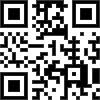PSYCHOLOGICAL PHENOMENOLOGY OF STUDENT COMMUNICATION IN EDUCATIONAL AND PERSONAL CYBERSPACE
DOI:
https://doi.org/10.30888/2663-5712.2024-26-00-039Keywords:
problematic Internet use (PIU), productive activity in the Internet space, cyberspace, educational cyberspace, personal cyberspace, counterproductive strategies of behavior, eventfulness in cyberspace, eventuality, communicative envelopes of the educationAbstract
The article examines the peculiarities of student communication in the Internet space, presents the results of an empirical study, outlines the phenomenology of student activity and communication in the educational process (counterproductive and productivMetrics
References
Aboujaoude E. Problematic Internet use: an overview. World Psychiatry. 2010 Jun;9(2):85-90. Doi: 10.1002/j.2051-5545. 2010.tb00278.x
Burger, C.; Bachmann, L. (2021)."Perpetration and victimization in offline and cyber contexts: A variable- and person-oriented examination of associations and differences regarding domain-specific self-esteem and school adjustment". Int J Environ Res Public Health. 18 (19): 10429. Doi:10.3390/ijerph181910429
Campbell M. A. (2005). Cyber bullying: an old problem in a new guise? Australian Journal of Guidance and Counselling, 15 (1), 68-76.
Campbell M. A., Slee, P. T., Spears, B., Butler, D., & Kift, S. (2013). Do cyberbullies suffer too? Cyberbullies’ perceptions of the harm they cause to others and to their own mental health. Sch Psychol Int, 34(6), 613-629.
Carr, N. G. The Shallows: How the Internet is Changing the Way We Think, Read and Remember. Atlantic Books. 2020. 320 p.
Dahl D, Bergmark KH. Problematic internet use: A scoping review – longitudinal research on a contemporary social problem, 2006–2017. Nordic Studies on Alcohol and Drugs. 2020;37(6):497-525. Doi:10.1177/1455072520941997
Ding H, Cao B and Sun Q (2023) The association between problematic internet use and social anxiety within adolescents and young adults: a systematic review and meta-analysis. Front. Public Health 11:1275723. Doi: 10.3389/fpubh.2023.1275723
Fernandes, Blossom; Nanda Biswas, Urmi; Tan-Mansukhani, Roseann; Vallejo, Alma; Essau, Cecilia A. (September 2020). "The impact of COVID-19 lockdown on internet use and escapism in adolescents". Revista de Psicología Clínica con Niños y Adolescentes. 7 (n 3): 59–65. Doi:10.21134/rpcna.2020.mon.2056.
Ghosting and destiny: Implicit theories of relationships predict beliefs about ghosting / G. Freedman, D.N. Powell, B. Le, K.D. Williams / Journal of Social and Personal Relationships. 2019. Vol. 36. № 3. P. 905—924. Doi:10.1177/0265407517748791
Ghosting and orbiting: An analysis of victims’ experiences / L. Pancani, D. Mazzoni, N. Aureli, P. Riva // Journal of Social and Personal relations. 2021. Vol. 38. № 7. P. 1987—2007. Doi:10.1177/02654075211000417
Kamolthip, R., Chirawat, P., Ghavifekr, S., Gan, W. Y., Tung, S. E. H., Nurmala, I., Nadhiroh, S. R., Pramukti, I., & Lin, C.-Y. (2022). Problematic Internet use (PIU) in youth: A brief literature review of selected topics. Current Opinion in Behavioral Sciences, 46, Article 101150. https://doi.org/10.1016/j.cobeha.2022.101150
Langos C. (2012). Cyberbullying: The Challenge to define. Cyberpsychology, behavior, and social networking, 15, 6, 285-289.
Lopez-Fernandez, O.; Romo, L.; Kern, L.; Rousseau, A.; Lelonek-Kuleta, B.; Chwaszcz, J.; Männikkö, N.; Rumpf, H.-J.; Bischof, A.; Király, O.; et al. Problematic Internet Use among Adults: A Cross-Cultural Study in 15 Countries. J. Clin. Med. 2023, 12, 1027. https://doi.org/10.3390/jcm12031027
Pettorruso M, Valle S, Cavic E, Martinotti G, di Giannantonio M, Grant JE. Problematic Internet use (PIU), personality profiles and emotion dysregulation in a cohort of young adults: trajectories from risky behaviors to addiction. Psychiatry Res. 2020 Jul; 289:113036. Doi: 10.1016/j.psychres.2020.113036
Pontes HM, Macur M (2021) Problematic internet use profiles and psychosocial risk among adolescents. PLoS ONE 16(9). https://doi.org/10.1371/journal.pone.0257329
Suler John (2004). "The Online Disinhibition Effect".CyberPsychology & Behavior. 7 (3): 321–326. Doi:10.1089/1094931041291295
Weinstein, A., & Aboujaoude, E. (2015). Problematic Internet use: An overview. In E. Aboujaoude & V. Starcevic (Eds.). Mental health in the digital age: Grave dangers, great promise (pp. 3–26). Oxford University Press. https://doi.org/10.1093/med/9780199380183.003.0001
Williams K.D. Ostracism // The Annual Review of Psychology. 2007. Vol. 58. P. 425—452. Doi:10.1146/annurev. psych.58.110405.085641
Young K (1998). "The relationship between depression and internet addiction". CyberPsychology & Behavior. 1: 25–28. Doi:10.1089/cpb.1998.1.25
Downloads
Published
How to Cite
Issue
Section
License
Copyright (c) 2024 Authors

This work is licensed under a Creative Commons Attribution 4.0 International License.





